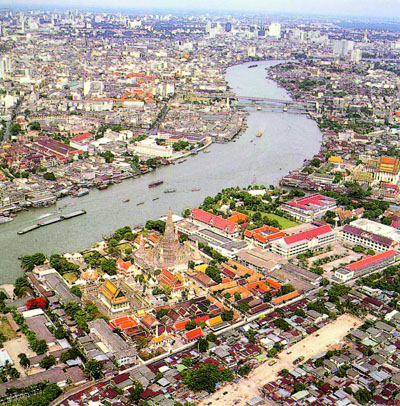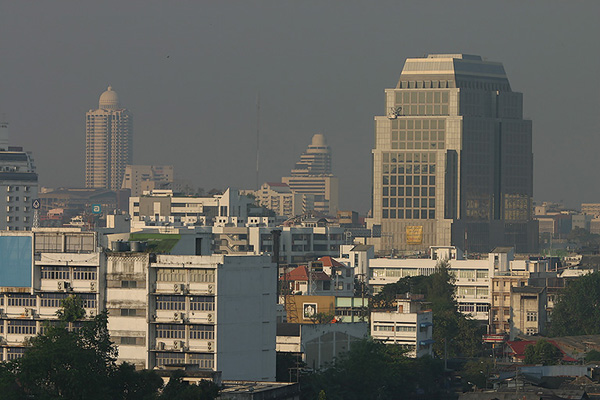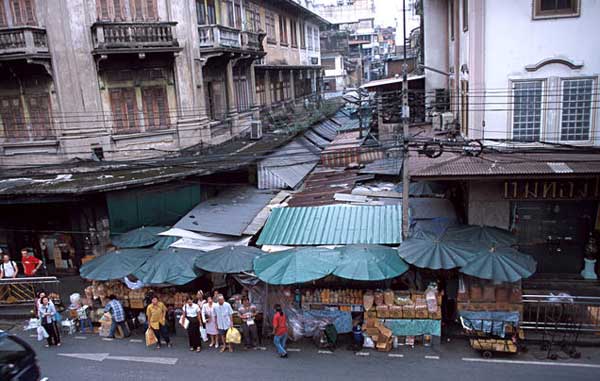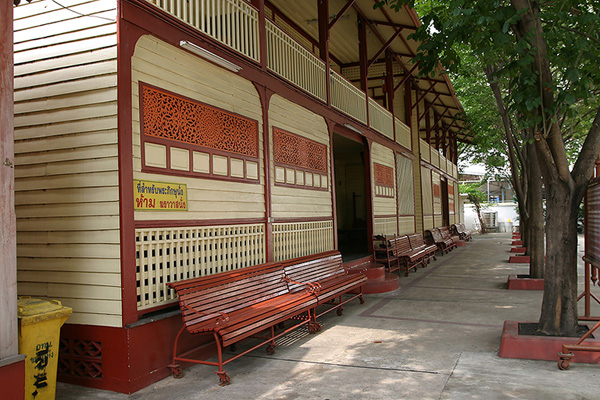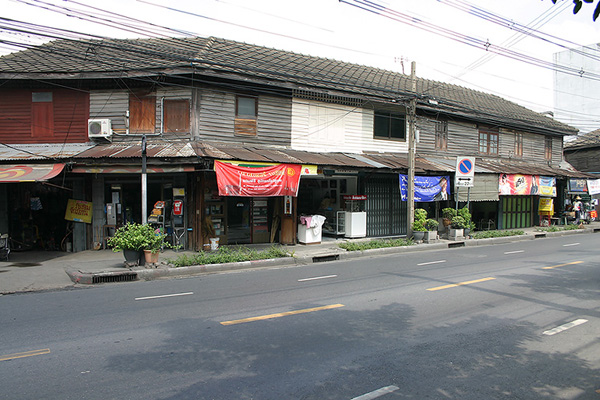Thai - Bangkok
|
|---|
Sawadee 'hello' in Thai. Sawadee Khup (m) Sawadee Kaa (f).
Bankgkok Krung Thep (means the city of angels).
An aerial view of bangkok and the Chao Phraya River
Bangkok has dominated Thailand's urban hierarchy as well as its political, commercial and cultural life since the late 18th century. Distinctly modern and Westernized, Bangkok is still a sleepy Thai village with a louder soundtrack of traffic and nightlife.
Bangkok proper seethes on the east side of the Mae Nam Chao Phraya (Chao Phraya River), drawing rural Thai folk into its cluttered fold daily. The city is reportedly sinking at a rate of 5cm (2in) every year, but there's too much sànùk (a Thai sense of fun) going on for that to get anyone down.
Bangkok is the largest city in Thailand, as well as being it's capital and main port. It is the cultural, educational, political and economic center of Thailand, as well as being the only metropolis. Bangkok has grown and expanded to include the area Thon Buri, which had at one point been the capital of Siam, and the combined area is commonly known as Krung Thep Mahanakhon.
The area of Bangkok, including Thon Buri and other provinces, is just over 1,568 square kilometers.
The population of Bangkok is close to 9 million people. This very highly populated city is currently faced with pollution problems in addition to traffic congestion and critical housing shortages.Special products from Bangkok are automobile parts, handguns, house-wares, antiques. At one time, agriculture was the main source generating income, but this has shifted to the manufacture of textiles, computers and electronics. The center of communication, Bangkok has approximately 4 million telephones, and cellular services are rapidly expanding.
Tourism has become a main source of revenue, with increasing numbers of visitors going to Thailand. Approximately a third of all banks in Thailand, with over three-fourths of the deposits of Thailand, are located in Bangkok.
Bangkok and Central Thailand are well within tropical latitudes and experience alternating periods of a dry and wet monsoon climate.
The south-west monsoon arrives between May and July and lasts into October. This is followed by a dry period from November to May, a period that begins with lower relative temperatures until mid- February.
Tthe rains begin in July; however, the arrival of the monsoon can vary. Occasional rains in the dry season are known as 'mango showers'. In Bangkok it usually rains most during August and September, though it can flood in October since the ground has reached full saturation by then. If you are in Bangkok in early October, you may find yourself in hip-deep water in certain parts of the city.
During the cool/dry season (November to February), night-time temperatures may dip as low as 12°C with normal daytime temperatures averaging around 28°C. During the rainy months (June to October), the temperature averages 32°C in the daytime, and 28°C at night.
Views of Bangkok
Bnagkok City Skyline
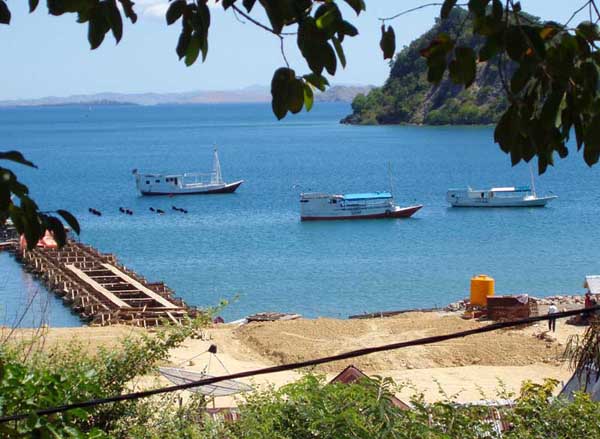
Fishing Boats
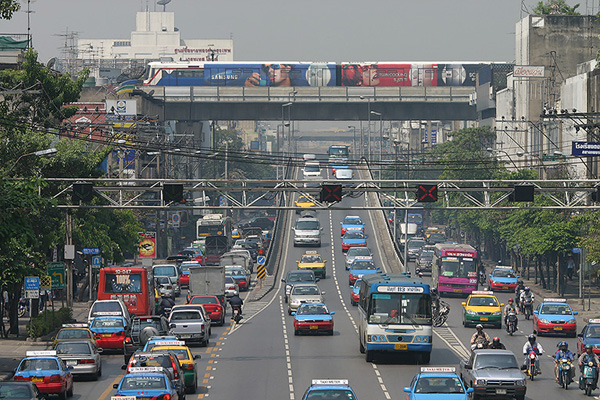
City traffic
City markets
Older large house
House on Bangkok's Chao Phraya River
Shops in the outer city area of Bangkok
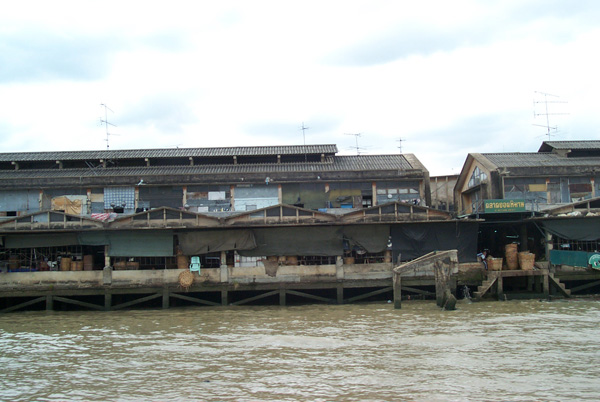
Stilt Houses for the low income
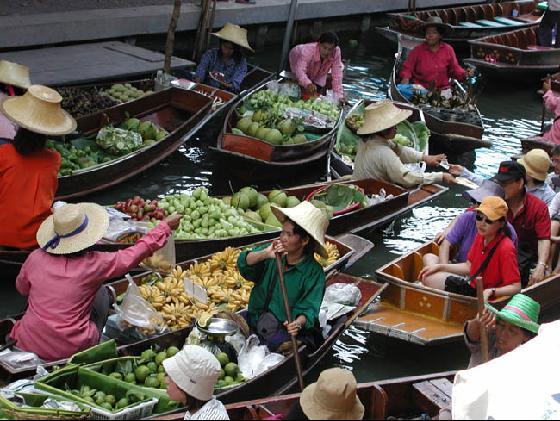
Low income housing
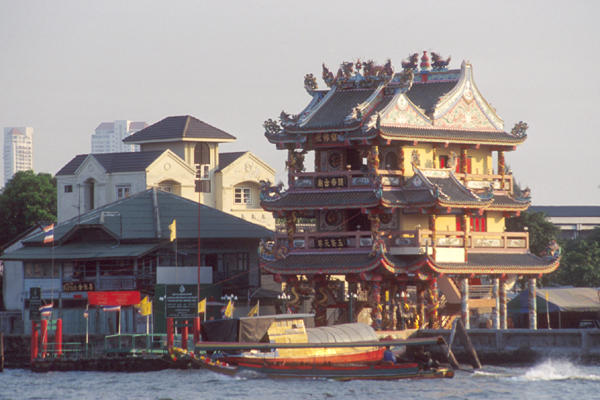
Luxury housing
